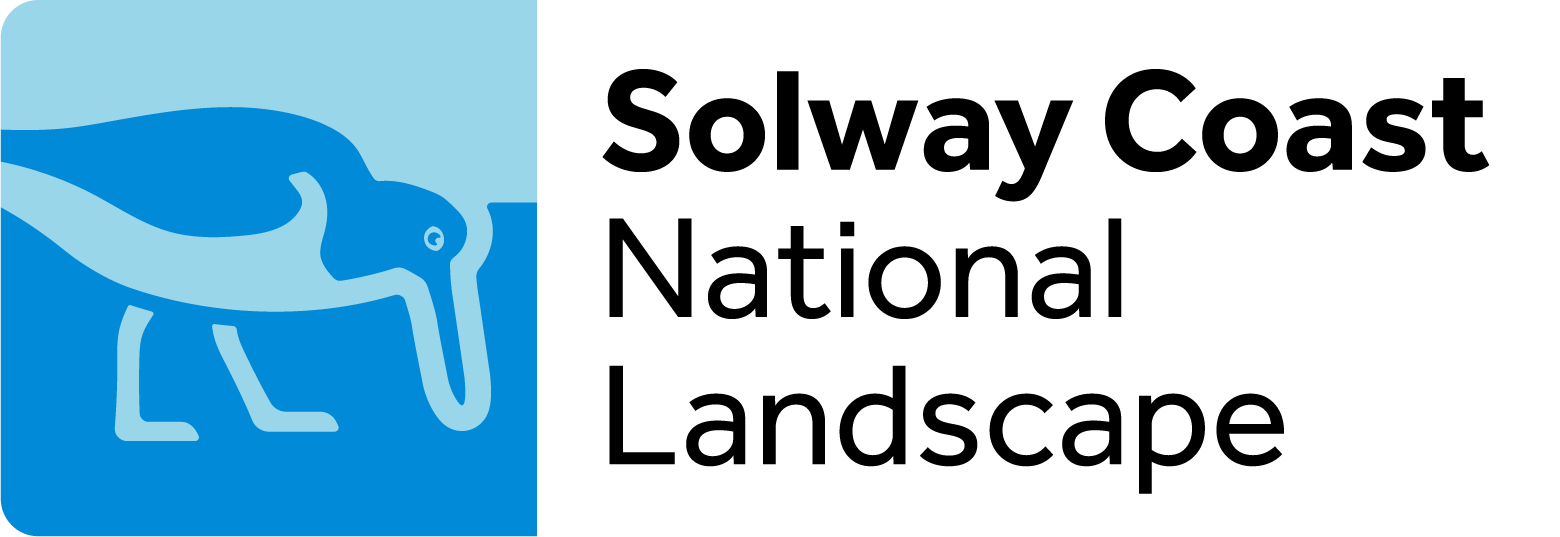Nature Recovery at Mawbray Banks Nature Reserve
Coastal sand dunes are the most threatened habitat in terms of biodiversity loss in Europe. They are suffering from widespread overstabilisation, invasive species, nutrient enrichment, habitat loss and fragmentation. As a result, dunes have become overgrown with vegetation causing dune wildlife populations to suffer.
Mawbray Banks is a site of special scientific interest and contains a large amount of dune heath, a habitat becoming very rare in Cumbria. It is also home to some rare and interesting species such as Isle of Man cabbage and natterjack toads.
We are working with Dynamic Dunescapes, a national project working to halt the decline to sensitive dune habitats, as we work to protect and improve the condition of this important site.
Dynamic Dunescapes is supported by the National Lottery Heritage Fund and the EU LIFE Programme
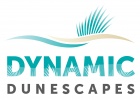
in this section
introduction to the project
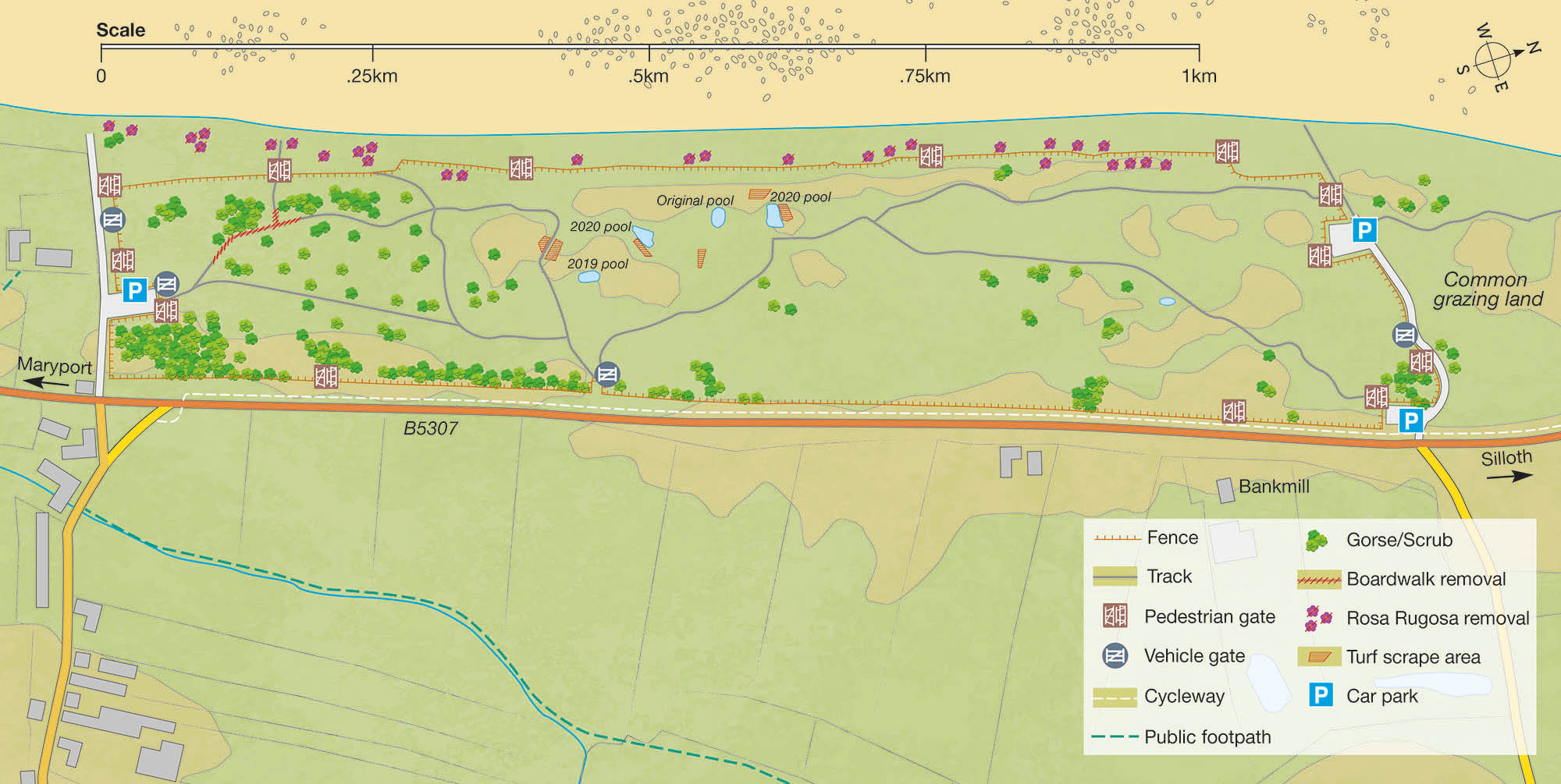
Conservation Grazing
Grazing is an effective and natural way to maintain certain habitats.
Historically, Mawbray Banks has been used for grazing which played a major role in helping to keep dunes healthy.
Change in how the land is used and a shift in grazing regimes has had a large impact in loss of healthy dune systems. Grazing is effective in helping us to achieve many of our nature recovery aims:
- Keeping unwanted scrub at bay
- Disturbing the ground to allow specialised wild flowers to flourish
- Maintaining short grass length for natterjack toads
- Creating open patches of sand for natterjacks to hibernate
- Creating habitat for ground nesting birds
At Mawbray Banks, a small native breed cattle herd will be introduced to the site. The cattle from a local herd will be selected for their familiarity with people and well behaved dogs.
Stock fencing will be installed around the Southern portion of Mawbray Banks Nature Reserve along with cattle troughs to allow the cattle to be introduced
Public Access – Lots of gates!
We understand that Mawbray Banks Nature Reserve is valued as somewhere to walk, relax and enjoy the wildlife. All works we do as part of the nature recovery project will ensure your access to enjoy this special place continues whilst helping to protect and conserve our wildlife.
We will be installing lots of gates in the new stock fence, our aim is that will continue to be able to roam over the dunes much as you do currently.
Enjoying Mawbray Banks Nature Reserve with your Dog
Many of us enjoy walking our dogs on the wide open spaces of the Mawbray Dunes and Beach. The introduction of conservation grazing onto the Mawbray Banks Nature Reserve will not remove your freedom to enjoy the reserve with your dog, The rules for bringing your dog onto the reserve will continue to be:
- Keep your dog under close and effective control – if you are not confident about controlling your dog please keep it on a lead
- Pick up and dispose of dog mess in the bins provided
- Keep dogs out of the natterjack toad pools
Natterjack Toad Pools and Habitat Improvement
Ponds provide important habitats for amphibians and some of our rare plants. Importantly Mawbray Banks is a breeding site for the rare and endangered Natterjack Toad.
Natterjack Toads require ponds with little vegetation, gently sloping open access, short grass swards and areas that are sheltered to keep the water temperature warm.
In 2019 a new natterjack toad pool was constructed along with a redesign of the existing pool and other works to improve the natterjack habitat. This has seen the return of a breeding population of natterjack toads returning to the site.
Building on the success of the 2019 pools two further pools are being constructed on site in preparation for the 2021 natterjack toad breeding season.
We know that the natterjack toads thrive where there is a concentration of pools of varying aspect, size and depth and the new pools will provide this variety with a total of four pools in the central area of the Mawbray Banks site.
Opening up Areas of Bare Sand
Areas of bare sand are important as the natterjack toads hibernate in burrows they dig into the sand, however exposed areas of sand also benefits the overall health of site by maintaining the dynamic shifting dune environment and encourages specialised pioneer species to grow.
In the area around the natterjack ponds the vegetation will be scraped from the sides of some of the dunes opening up areas of bare sand.
Japanese Rose (Rosa Rugosa) Removal
Rosa Rugosa is an invasive species which dominates sand dunes and has become a significant problem on the Mawbray Banks Dunes and at other sites along the coast. The plants will be cut by hand or brushcutter with regrowth and uncut areas controlled by carefully applying selective herbicide minimising the risk to native species. These actions are followed up later in the same year and in subsequent years to ensure effectiveness.
Scrub Control
As the Mawbray Banks dunes have become increasingly stabilised, more scrub (brambles, bushes and small trees) has grown, encroaching onto the important dune heath. The Solway Coast AONB Conservation Volunteers work hard to cut back encroaching scrub and gorse. Over the next few years additional dense areas will be removed through mechanised flailing and grubbing out.
With the introduction of grazing to the site future scrub encroachment will be limited by the grazing cattle.
Areas of gorse will be maintained on the reserve to provide habitat and shelter for birds, ensuring nesting is not disrupted.
Removal of the Timber Boardwalk
The timber boardwalk has become increasingly unstable and rotten and also forms a barrier to the movement of grazing cattle across the reserve.
The boardwalk will be removed and a new path levelled and graded to maintain easy access along this route through the reserve.
Frequently Asked Questions
What are the timescales for the work?
The machinery will be on site from the week commencing 09 November undertaking the following elements of the project:
- Digging two new natterjack toad pools
- Scraping turf around the pools
- Mulching some areas of gorse around the pools
- Burying water pipe to feed two cattle troughs
- Stage 1 of Rosa Rugosa removal
- Removal of the rotten wooden boardwalk
This work should be completed in 3 to 4 weeks
The installation of the fence will start late January with contractors working on site for 2 to 3 weeks
The cattle will move onto the site in late April early May.
What sort of cattle will we see on the site?
The site will be grazed by a small herd of 8 Belted Galoway cattle.
Will the cattle be on the site all the time?
Yes, initially at least, the same cattle will be on the site year round. We will monitor the cattle health and the conservation grazing outcomes and change the grazing regime if required.
Are you grazing the site to make money?
No this is not a commercial cattle herd. We will not be fattening the cattle for sale and the cattle will not receive any supplementary inputs other than those required to maintain health. The same cattle will remain on the site for their natural lives and their only job is to graze the site and improve the habitat.
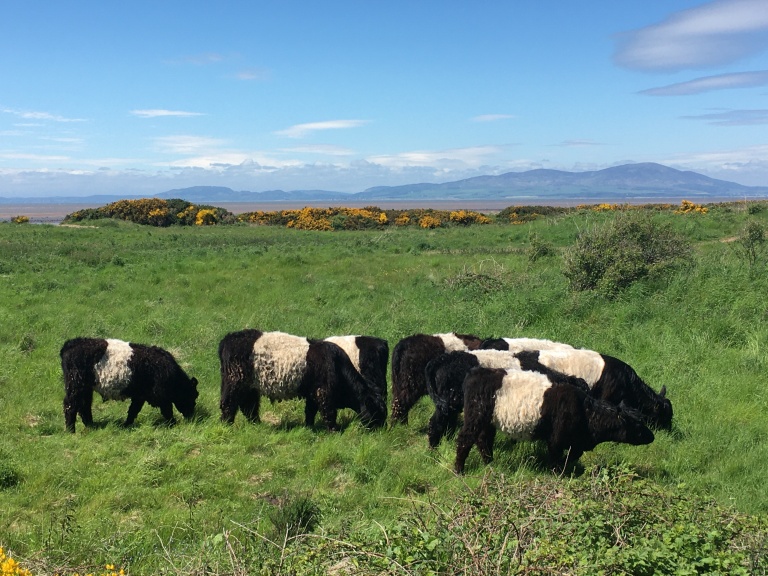
Will I be safe walking through the site when the grazing cattle are introduced?
The law places responsibilities upon us as managers of the land alongside our grazier to assess and manage the risks of grazing cattle on an area having public access. We have done this in selecting the herd that will be grazing Mawbray Banks:
- Belted Galoway cattle are recognised as a breed particularly suited to conservation grazing on public sites and are used by many other orgnaisations including the National Trust, Wildlife Trust and RSPB.
- The cattle being introduced on site have been grazing another public access site and have shown no tendency towards aggression
- The herd will be on the site long term, it will be their home for their natural lives
- The herd will not have calfs at foot i.e. this will not be a breeding herd, removing the risk of maternal protective instincts introducing additional risks
- New cattle joining the herd will have been assessed as having a suitable temperament
- There will only be approx 8 cattle on 40Ha of the Mawbray Banks, there is plenty of room for cattle and people to give each other plenty of space
In addition signage will be provided with tips on how to behave around cattle (these are tips endorsed by the Health and Safety Executive, National Farmers Union and the Ramblers Association)
Do
- Stop, look and listen. Look out for any cattle and watch how they are behaving
- Try to avoid getting between the cattle
- Be prepared for cattle to react to your presence, especially if you have a dog with you
- Move quickly and quietly, and if possible walk around the herd
- Keep your dog close, on a short lead, and under effective control
Don’t
- Don’t hang onto your dog if you are threatened by cattle – let it go as the cattle will chase the dog and not you
- Don’t put yourself at risk by walking close to cattle
- Don’t panic or run – most cattle will stop before they reach you; if they follow just walk on quietly
Why do the natterjack pools sometimes dry out?
Many people are concerned when they see the pools on the reserve drying out, however this is expected and designed into the pools because natterjack toads favour ephemeral or drying pools. Natterjack toads are in competition with common toads, newts and dragonfly larvae when breeding. However, all these competitors need a persistent pools with permanent water, the natterjacks have evolved to occupy a habitat niche within the ephemeral pools enabling them to out compete the common toads and other predators.
The shallower pools we are constructing warm up much quicker, this warmer water triggers the natterjack toads to develop and metamorphose more rapidly. As soon as the pools fill the toads are ready to breed and with the warm water the offspring rapidly develops through the stages of spawn, tadpoles, toadlets and to maturity when the toads move out of the pools.
It can be upsetting to see the evidence of toad breeding within a pool that has dried, but don’t worry the toads will try again and overall, the breeding success will be greater than in a persistent pool.
The proof of the pudding is in the eating as they say and in the two years since installing the new pool design Mawbray Banks has seen an explosion in the natterjack population with multiple spawning’s, even with several drying periods, in both years.
Having said all the above, with the installation of a water supply onto the site we can now top up the pools particularly during the first spawning period during April and May.
Click here to listen to the toads calling last year at Mawbray Banks.
The Cattle Are Entering the Natterjack Breeding Pools, Does This Harm the Natterjacks?
The cattle have been introduced to Mawbray Banks because the lack of large grazing herbivores was a missing element in the ecological system that is the dune heath and natterjack habitat. The natterjacks have evolved alongside large herbivores and the cattle produce the habitat the natterjacks need; through grazing the heath to produce a short sward the natterjacks can move and hunt through, trampling around the pools to maintain the open sand and keeping the pools free of vegetation. We have been fortunate in learning from other sites which have been grazing dunes with natterjacks for several years, some of which did initially fence the pools, the experience is that fencing is in fact counterproductive and that the benefits of the habitat maintenance carried out by the cattle far outweighs any downsides. We will of course be monitoring the effect of the cattle on all aspects of the habitat including the pools. We are encouraged by the natterjack population so far this year, which have spawned and matured through to the toadlets we are seeing now, whilst the cattle have been on site.
Why Do You Ask That Dogs (and humans) Keep Out Of The Pools
The most crucial reason is that dogs often have flea, tick and worming treatments which are released into the pools via the skin and are very harmful to all the organisms living in the pools, including the natterjacks.
The second reason is that dogs and humans entering the pools often cause waves and splashing which strands the tadpoles on the banks of the pool. The cattle moving much slower don’t tend have to have this effect.
Progress Blog
Tuesday 10 November
The excavators arrived on site today in preparation for work starting on the two new pools tomorrow. OpenSpace, our contractor will be working at various locations in the centre of the reserve, initially excavating the pools and scraping back turf.
Work areas will be taped off and at various times you may need to use alternative routes around the areas where machinery is working.
Please stay well clear of working machinery and observe warning notices and directions.
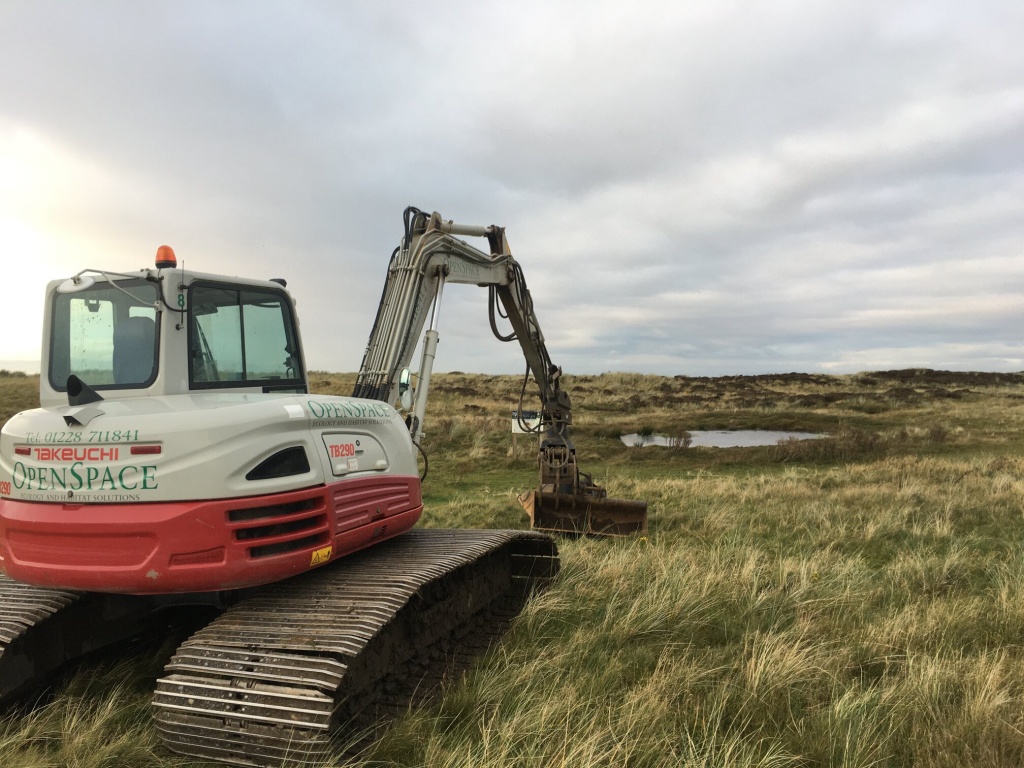
Thursday 12 November
The contractors started in earnest today clearing the areas for the new pools and scraping turf from the dune sides around the pool sites. Some of the scraped material has been used to create a bund, or raised mound, at the windward end of the 2019 pool. This has been designed to act as a windbreak for this pool.
Tomorrow the contractors will make a start on digging the first of the new pools.
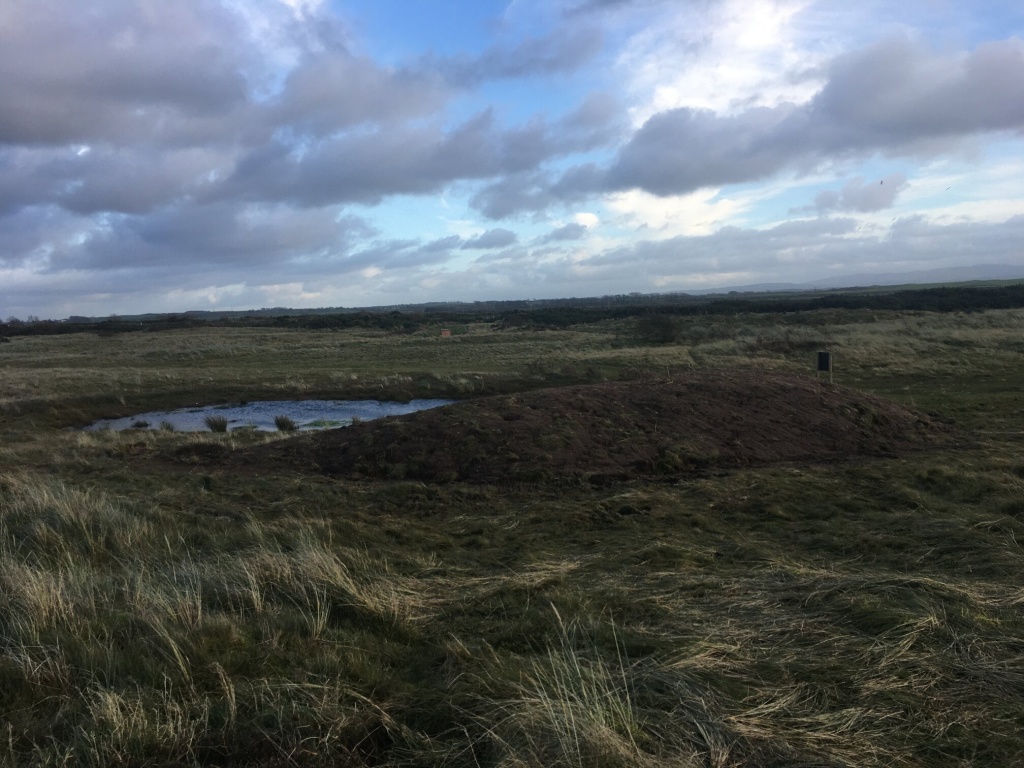
Friday 13 November
Well it may have been Friday 13 but there was nothing unlucky about today with Paul and the team from Open Space making a great progress on the first of the new pools.
The pools are constructed by digging a hole quite a bit deeper and larger than the final size of the pool this is then lined with a sandwich of geotextile fabric, butyl rubber pond liner covered with a further layer of fleecy geotextile. This liner sandwich is then covered with 500mm of sand infill. When complete this liner sandwich and sand infill makes for a very robust long-lasting pool and a perfect breeding habitat for the natterjack toads.
You may have noticed that the liner has become exposed on the original pool which was relined in 2019, this is due to the wind removing the sand covering the liner edges, we have amended the design on the new pools to bury the edges deeper and we will also be carrying out some repairs on the original pool to achieve the same results.
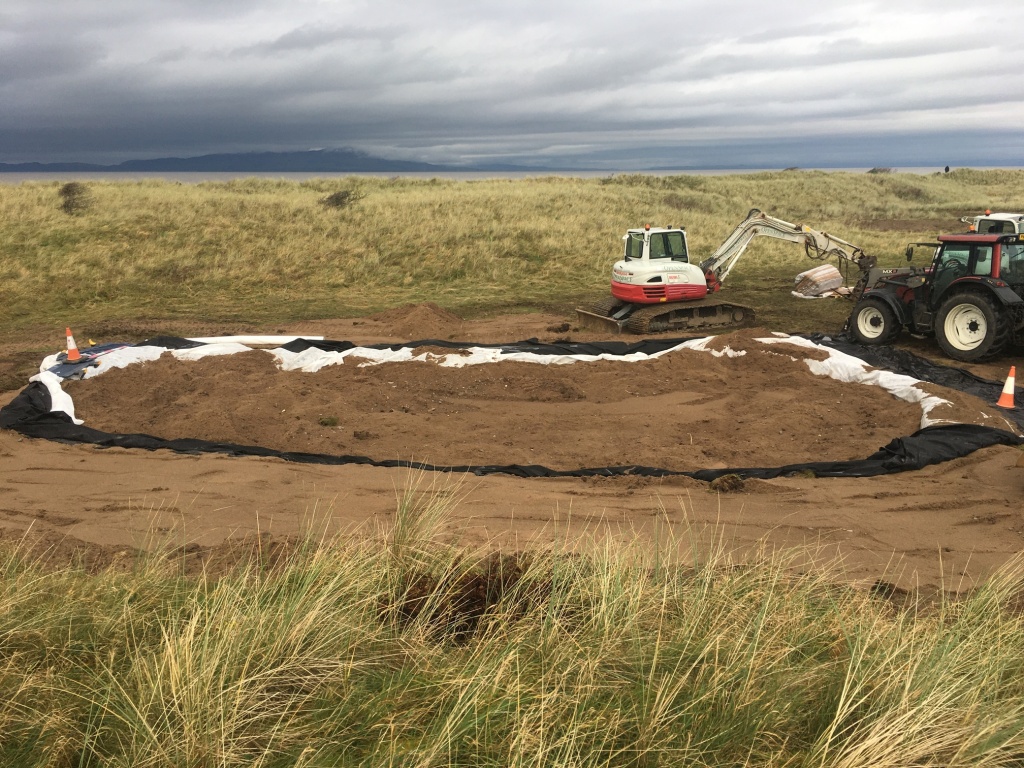
Tuesday 17 November
In spite of the atrocious weather the team continue to make good progress. The first of the new natterjack toad poolsis now complete with the liner fully covered and the area graded and landscaped. Given the amount of rain we are “enjoying” currently it won’t be long till this pool is full!
Work has also been completed on installing the water pipes which will feed the new cattle troughs and also provide the ability to top up the pools when needed (more on this in the FAQ section above)
Rounding off a busy couple of days two areas of gorse around the natterjack pools have been mulched to inhibit regrowth (again more on why we remove areas of gorse in the FAQ section above)
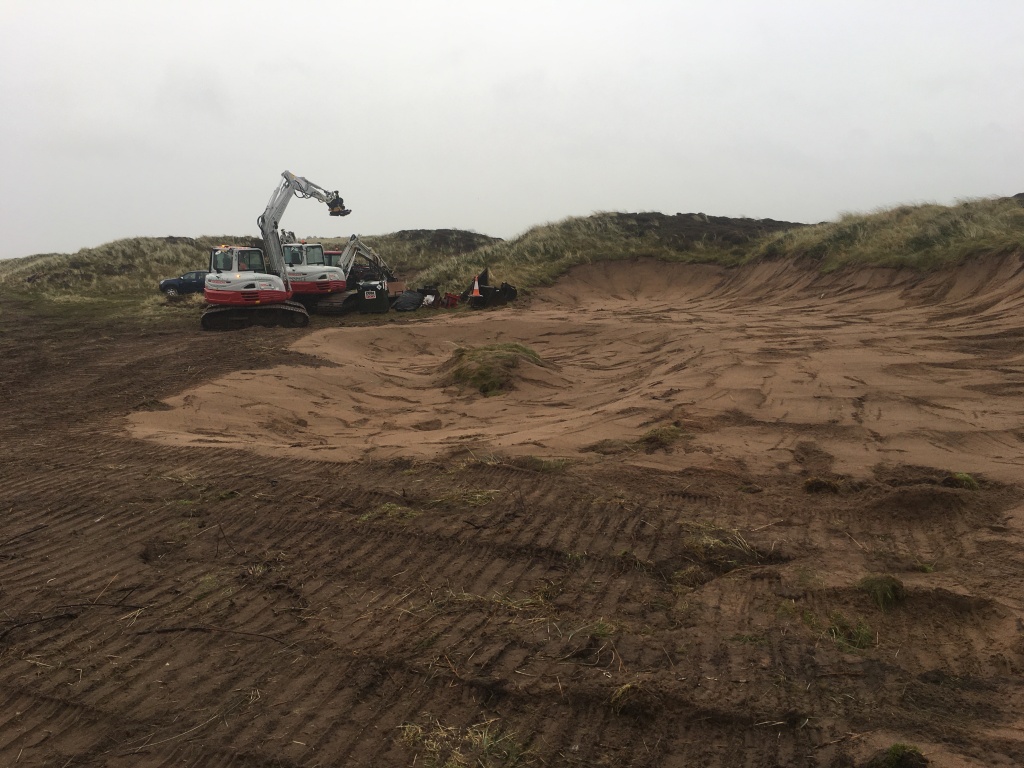
Wednesday 18 November
Rather than making a start on the next natterjack pool (gale force winds and 240sqM of pond liner are not a happy combination!) the team moved on to the Rosa Rugosa (Japanese Rose) removal and dismantling the rotten boardwalk.
The Rosa Rugosa removal is a multi-stage process – the first stage, started today, involves using a tractor mounted mulcher which grinds the plants down to root level. The team will be back in May next year to treat any regrowth with a selective herbicide and this will be repeated again the following year at which point this invasive plant should be eradicated to be replaced with native dune grasses and plants.
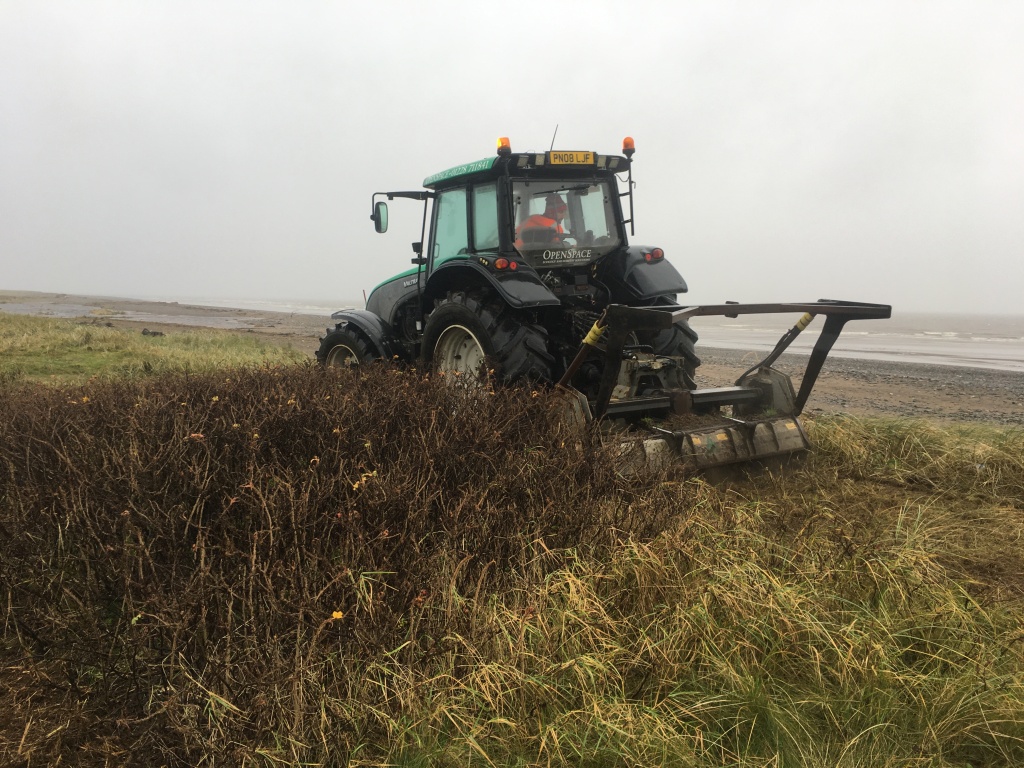
Thursday 19 November
Work on the second of the new natterjack pools has progressed today and should be complete tomorrow. This second pool is a slightly larger and deeper ensuring we have a diversity of pool types.
Work also continued removing the boardwalk and grading out the ground to provide a path along the boardwalk line. We will be placing some sand over the rather sloppy clay that was revealed under the boardwalk to provide a good walking surface.
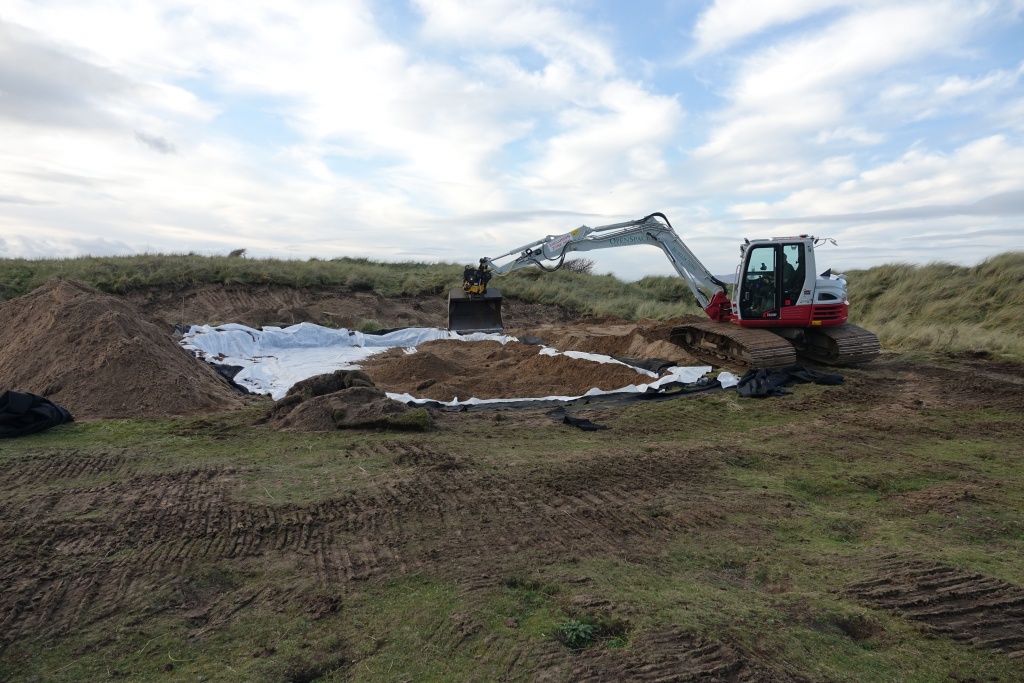
Monday 23 November
Today saw the completion of most of the this first phase of works with the machinery moving of site tomorrow.
The mulcher took a last deep pass over the Rosa Rugosa removal areas, the boardwalk was burned and buried, and the access track was levelled and graded.
As always following a project like this, using large machinery, the site is looking a little disturbed. We have tried to minimise this by using a specialist contractor with low ground pressure machines and the skills to work sensitively on an important site such as this. However, we know the site will recover quickly next spring as vegetation heals over.
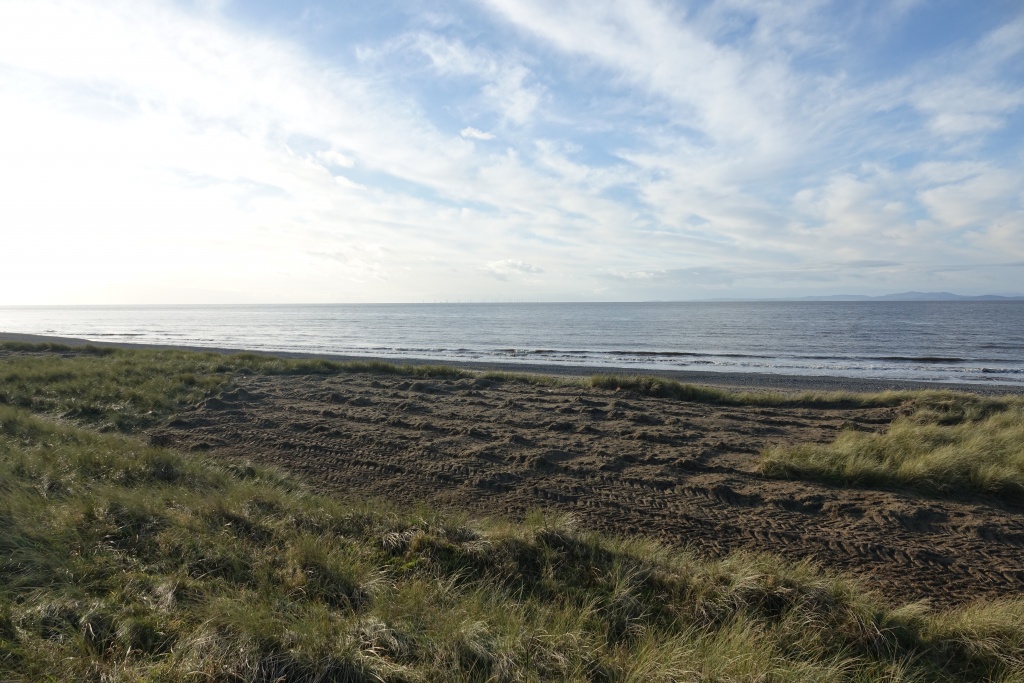
Friday 15 January
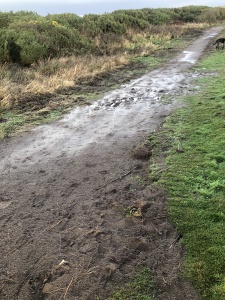
Tuesday 09 February
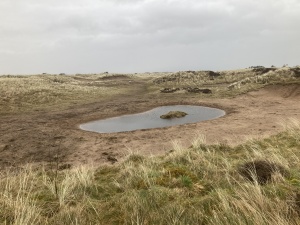
Monday 01 March
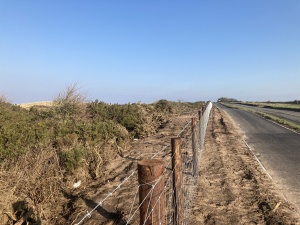
Monday 05 April
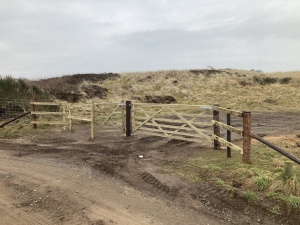
Tuesday 06 April
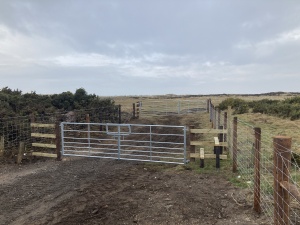
Thursday 22 April
The kissing gates at the main car park entrances to the reserve are now installed and they look great.
We have used this style of gate as they are super strong and reliable for these high traffic entrances, and they are large enough to be used with child buggies or when entering with a dog.
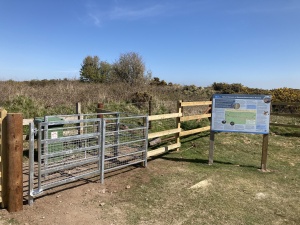
Tuesday 23 April
And the disability access gate at the end of the boardwalk is now installed. This is a two-way, self-closing gate, easy for someone with mobility problems to open and secure to ensure the stock stay safe inside the fence
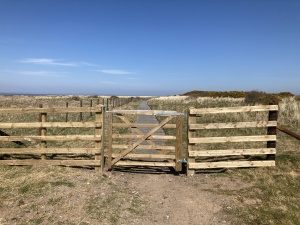
Friday 30 April
Installed the cattle trough today, and that is the site ready for the cattle!
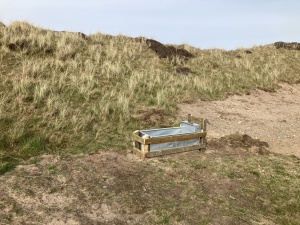
Friday 04 June
And the cattle are here! After a short journey from Anthorn the cattle are now making themselves at home , hey have explored the site thoroughly and are now settled grazing on Mawbray banks grass.
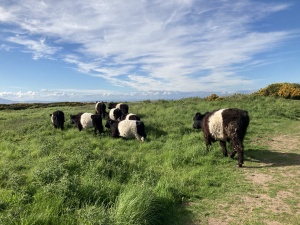
Saturday 05 June
We had a great day today on Mawbray Banks with our first “Meet the Cattle” event. We understand that some people may be a little nervous with the introduction of cattle to the site and we want everyone to feel they can enjoy the site.
It was lovely to show lots of people around the reserve and explain the nature recovery projects we have been working on and how the cattle contribute to improving condition of the reserve. Mike and Hannah, our graziers joined us to introduce the cattle and answer questions.
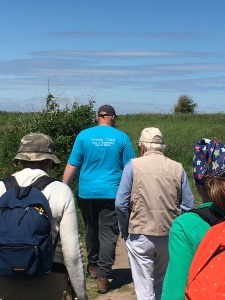
Friday 11 June
We are very encouraged by the natterjack success this year, particularly in the new pools. We have good numbers of tadpoles in three of the pools and despite the lack of rain for some weeks now we have new spawn strings in all the pools.
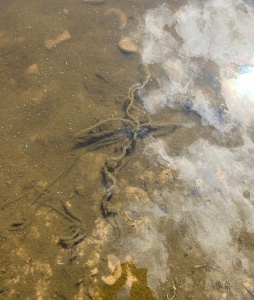
Downloads
Useful information about the project and ecology of Mawbray Banks
Silloth Dunes and Mawbray Banks – Definition of Favourable Condition
Mawbray Banks – Baseline Vegetation Survey Report
Vegetation Survey Report – Appendix 3: Raw Data

